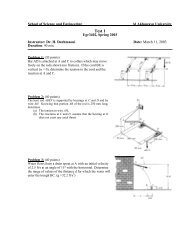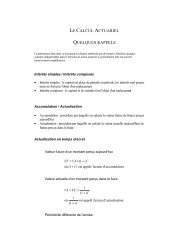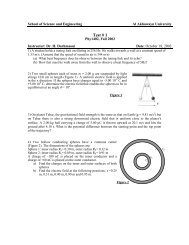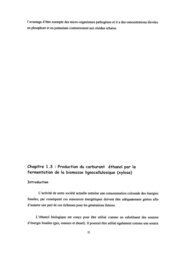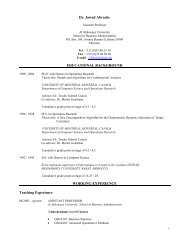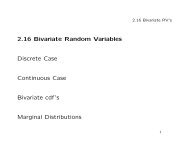Leadership and Values in Language Education - Al Akhawayn ...
Leadership and Values in Language Education - Al Akhawayn ...
Leadership and Values in Language Education - Al Akhawayn ...
- No tags were found...
Create successful ePaper yourself
Turn your PDF publications into a flip-book with our unique Google optimized e-Paper software.
94Proceed<strong>in</strong>gs of the 27 th MATE Annual ConferenceEvery morn<strong>in</strong>g <strong>in</strong> Africa, a gazelle wakes up. It knows it must outrun the fastestlion or it will be killed. Every morn<strong>in</strong>g <strong>in</strong> Africa, a lion wakes up. It knows it mustrun faster than the slowest gazelle or it will starve. It doesn’t matter whether youare a lion or a gazelle- when the sun comes up, you’d better be runn<strong>in</strong>g (cited <strong>in</strong>Daff, 1999:168).As we can see from this short passage, the use of the terms “gazelle” <strong>and</strong> “lion”goes beyond the literal mean<strong>in</strong>g to convey the idea of hard work, a non-stop race.The image is so strik<strong>in</strong>g that it makes the listener deeply <strong>in</strong>volved <strong>and</strong> will<strong>in</strong>g tounderst<strong>and</strong> the metaphorical use of the language. The gazelle seems to representthe weak (the workers) <strong>and</strong> the lion st<strong>and</strong>s for the strong (the boss). The shortpassage above shows that it is a matter of life or death if one of these two animalsdoes not run fast (starve/killed). The act of “runn<strong>in</strong>g” means competition <strong>and</strong>sacrifice to maximize production <strong>in</strong> the workplace. In this way, the leader makeshis language powerful <strong>and</strong> <strong>in</strong>spir<strong>in</strong>g, which helps him communicate his messageeffectively while ga<strong>in</strong><strong>in</strong>g the admiration <strong>and</strong> respect of his followers. In fact, it isoften the case that the audience go beyond the verbal <strong>in</strong>teraction while listen<strong>in</strong>g toa leader. They pay more attention to his appearance <strong>and</strong> other features as thefollow<strong>in</strong>g paragraph reveals.5. Symbols <strong>and</strong> <strong>in</strong>formal communicationIt is undeniable that leaders are watched, <strong>and</strong> their appearance, behaviour, actions<strong>and</strong> attitudes are symbolic to others. Symbols are a powerful tool forcommunicat<strong>in</strong>g what is important. Therefore, leaders are aware of what theysignal to others <strong>in</strong> addition to verbal messages. Indeed, nonverbal communication,i.e., messages transmitted through action <strong>and</strong> behaviour accounts for over one halfof the entire message received <strong>in</strong> a personal encounter. People <strong>in</strong>terpret Leaderactions as symbols, just as they attach mean<strong>in</strong>g to words. Leaders use their actionsto symbolize their vision <strong>and</strong> their commitment to it. They draw attention tospecific values <strong>and</strong> ideas, as used to be the case with Mart<strong>in</strong> Luther K<strong>in</strong>g when hewas defend<strong>in</strong>g the rights of black Americans <strong>in</strong> the sixties, or Nelson M<strong>and</strong>elawhen he was fight<strong>in</strong>g apartheid <strong>in</strong> South Africa. What makes the leader’s speechmore <strong>in</strong>fluential is when he resorts to <strong>in</strong>formal communication. This strategy of<strong>in</strong>formality narrows down the gap between the speaker <strong>and</strong> listeners. It isimportant not only because it is symbolic of leader vision, but also because it hasgreat impact on participants. Some Moroccan political leaders resort to itconsciously or unconsciously, but it is their right to use all strategies to ga<strong>in</strong> theattention of the audience, to <strong>in</strong>fluence the members of the listeners <strong>and</strong> push themto act <strong>in</strong> the direction one is driv<strong>in</strong>g at.





